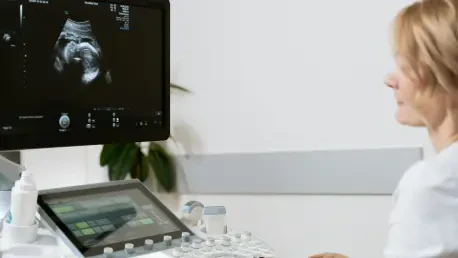Every year on November 8, the global healthcare community comes together to celebrate World Radiography Day, a tribute to the monumental discovery of X-rays by Wilhelm Conrad Roentgen in 1895, which forever changed the landscape of medical diagnostics and continues to impact lives. This significant occasion not only honors a historic breakthrough but also serves as a vital reminder of the indispensable role that medical imaging plays in contemporary healthcare systems across the world. With the theme “Empowering Healthcare through Imaging Excellence” guiding this year’s observance, the focus is squarely on how advancements in technology, particularly artificial intelligence (AI), and the dedication of radiographers are revolutionizing patient care. Medical imaging, encompassing tools like X-rays, CT scans, and MRIs, underpins over 70% of clinical diagnoses, enabling early detection of life-threatening conditions, guiding emergency responses, and informing precise surgical strategies. As a cornerstone of modern medicine, radiography bridges the critical gap between unseen ailments and actionable treatment plans, saving countless lives through timely interventions. This day offers a unique opportunity to explore the cutting-edge innovations reshaping the field, acknowledge the professionals who drive these advancements, and address the challenges and future possibilities that lie ahead in the journey toward diagnostic excellence.
Revolutionizing Diagnostics with AI
The integration of artificial intelligence into radiography marks a transformative leap forward in the precision and efficiency of medical diagnostics. AI-driven systems are now capable of analyzing vast amounts of imaging data with remarkable speed, identifying subtle patterns that might elude even the most trained human eye. Reports suggest that these technologies can reduce diagnostic errors by as much as 25%, a statistic that underscores their potential to enhance patient outcomes significantly. From detecting early signs of cancer to pinpointing neurological anomalies, AI tools are becoming invaluable allies in clinical settings. This shift not only accelerates the diagnostic process but also alleviates the workload on radiographers, allowing them to focus on complex cases and patient interaction. As these intelligent systems continue to evolve, their adoption in hospitals and clinics worldwide signals a new era where technology and human expertise combine to deliver unparalleled accuracy in healthcare.
Beyond AI, the field is witnessing a wave of innovations that further elevate diagnostic capabilities while prioritizing patient safety. Digital radiography, for instance, offers sharper images with less radiation exposure compared to traditional methods, ensuring that patients face minimal risks during scans. Similarly, advancements like 3D imaging provide detailed visualizations that aid in intricate surgical planning, while low-radiation CT scanners balance quality with safety. High-speed MRI systems are also reducing scan times, improving patient comfort without compromising results. These technological strides reflect a broader commitment within the industry to push the boundaries of what’s possible in imaging, ensuring that each advancement contributes to better care. Celebrating these developments on November 8 highlights how far radiography has come and sets the stage for even greater achievements in the years ahead.
Embracing Imaging Excellence for Better Outcomes
The theme of “Imaging Excellence” this year encapsulates a powerful vision for radiography that goes beyond mere technological upgrades to focus on precision and patient-centered care. At its core, this concept emphasizes the need for imaging to be not only accurate but also tailored to improve individual health outcomes through innovative practices. It calls for a holistic approach where cutting-edge tools are matched with skilled professionals who can interpret results with finesse. Radiographers, often the unsung heroes of diagnostics, are being redefined as frontline specialists whose expertise directly influences medical decisions. Empowering them with continuous training and access to state-of-the-art equipment is essential to maintaining high standards in healthcare delivery, ensuring that every scan contributes meaningfully to a patient’s journey toward recovery.
Patient safety remains a fundamental pillar of imaging excellence, addressing long-standing concerns and building trust in medical procedures. Modern imaging technologies are designed to use the lowest possible doses of radiation, adhering to stringent global guidelines established by bodies like the World Health Organization (WHO) and the International Atomic Energy Agency (IAEA). These protocols ensure that exposure levels are clinically safe, minimizing risks while maximizing diagnostic benefits. Educational campaigns are also playing a crucial role in dispelling myths about radiation, reassuring patients that necessary screenings pose little to no harm. By prioritizing transparency and safety, the field fosters confidence among those who rely on imaging for critical health insights, reinforcing the idea that excellence in radiography is as much about compassion and trust as it is about technical prowess.
Global Unity in Celebrating Medical Imaging
Across the globe, November 8 unites nations in a shared recognition of radiography’s profound impact on healthcare, showcasing a remarkable diversity of approaches to common challenges. In technologically advanced countries like the United States, Germany, and the United Arab Emirates, the day often features exhibitions of AI-driven diagnostics and robotic radiology systems, highlighting the future of precision medicine. Meanwhile, in regions such as South Africa, India, and rural parts of Australia, the emphasis shifts toward accessibility, with mobile imaging units and free screening programs bringing essential services to underserved communities. These varied initiatives reflect a collective understanding that while innovation drives progress, equity in access remains a critical goal for improving global health standards.
This worldwide celebration also serves as a platform for fostering awareness and inspiring collaboration among healthcare stakeholders. Events like workshops in the United Kingdom, seminars in Canada, and community outreach in Brazil demonstrate how each region contributes uniquely to the advancement of medical imaging. Whether through showcasing the latest high-speed MRI systems or providing basic X-ray services in remote areas, these activities underscore a universal commitment to enhancing diagnostic capabilities. The day transcends geographical and economic boundaries, reminding all involved that radiography is a fundamental need in every corner of the world. By highlighting both cutting-edge advancements and grassroots efforts, this global observance paints a comprehensive picture of a field that thrives on both innovation and inclusivity, striving to ensure no patient is left behind.
Looking Ahead to Radiography’s Future
Peering into the horizon, the future of radiography holds immense promise, with emerging trends poised to redefine how diagnostics are conducted over the next several years. By 2030, predictive imaging could become a reality, enabling the identification of diseases before symptoms even manifest, thus shifting the focus from treatment to prevention. Portable imaging devices are also on the rise, offering the potential to deliver high-quality diagnostics in remote locations or even in unconventional settings like space medicine. Such advancements suggest a landscape where access to cutting-edge care is no longer confined to major medical centers but can reach the farthest corners of the globe, transforming the very nature of healthcare delivery.
However, the path forward is not without significant obstacles that must be navigated to fully realize these possibilities. A persistent shortage of trained radiographers continues to strain healthcare systems, particularly in developed nations where demand for skilled professionals outpaces supply. Additionally, the high cost of adopting advanced imaging technologies poses a barrier, especially in resource-limited settings where funding for equipment remains scarce. Data privacy concerns, particularly with AI’s increasing role in handling sensitive patient information, also demand robust safeguards to maintain trust. Addressing these challenges requires concerted efforts, from investing in training programs to developing cost-effective solutions and strengthening cybersecurity measures. As November 8 prompts reflection on radiography’s impact, it also serves as a call to action for governments, institutions, and industry leaders to collaborate on sustainable strategies that ensure the benefits of imaging excellence are universally accessible.
Reflecting on a Milestone in Healthcare
November 8 marked a powerful global acknowledgment of radiography’s indispensable role in shaping modern medicine, bringing together diverse communities to honor the legacy of X-ray discovery and its ongoing evolution. The theme of empowering healthcare through imaging excellence resonated deeply, spotlighting how AI and digital innovations have elevated diagnostic precision while prioritizing patient safety. From high-tech showcases in leading nations to mobile units serving remote areas, the day’s events captured a shared dedication to advancing health equity. Radiographers were celebrated as pivotal figures whose expertise drove countless life-saving interventions. Looking back, the occasion underscored a pivotal moment to recommit to overcoming barriers like workforce shortages and technology costs. Moving forward, stakeholders must prioritize scalable training initiatives, advocate for funding to bridge access gaps, and explore partnerships that democratize cutting-edge tools, ensuring that the transformative power of medical imaging continues to reach every patient in need.









